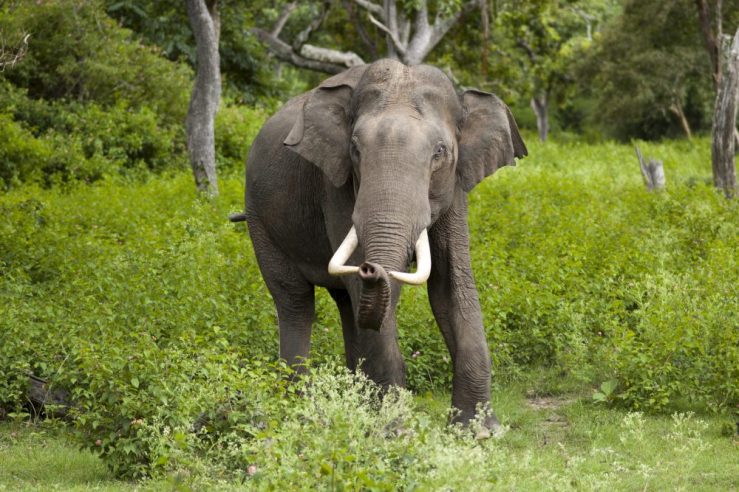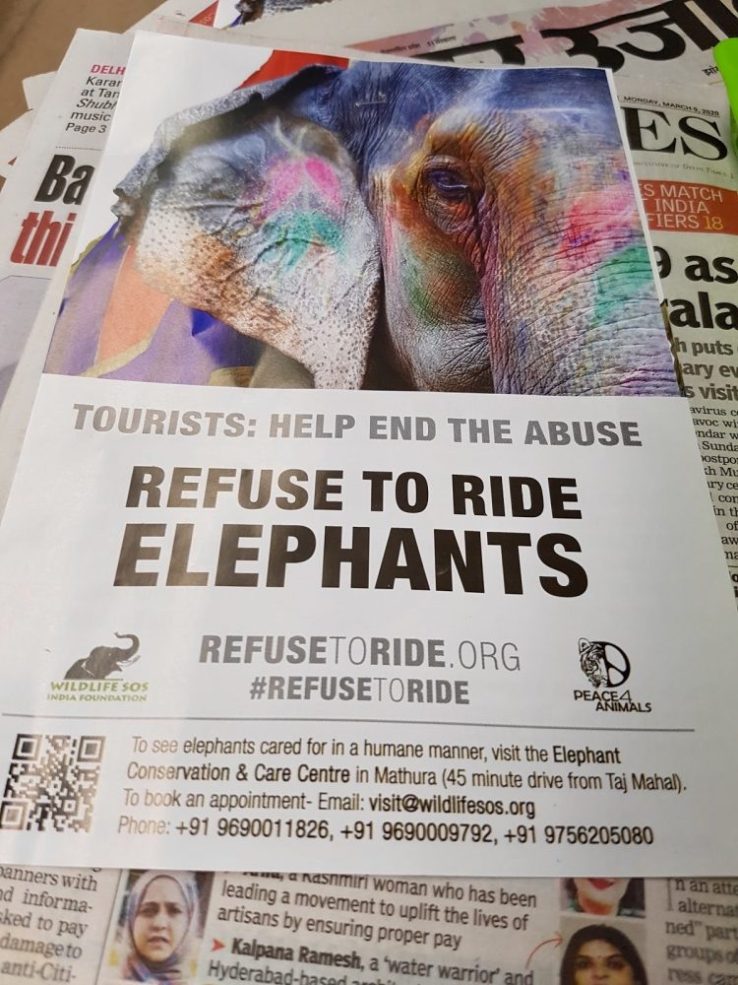![Asian elephants greeting each other by inter-twining their trunks By jinterwas - [1], CC BY 2.0, https://commons.wikimedia.org/w/index.php?curid=22849407](https://happinessbetweentails.com/wp-content/uploads/2020/06/three_elephants_curly_kisses-e1591753233140.jpg?w=739) Asian elephants greeting each other by inter-twining their trunks, by jinterwas – [1], CC BY 2.0
Asian elephants greeting each other by inter-twining their trunks, by jinterwas – [1], CC BY 2.0It’s simple to be cynical. When I travel, it’s easy to regard those different from me derisively. When I point at others, as the old saw goes however, the majority of my fingers point back at me.Living in the prosperous United States as I do, it’s tempting to ignore how our politics hurt ourselves and other countries. If it was ever possible to do — now amid our police brutality of innocent people, during these perilous times of COVID19 — how can anyone overlook how intertwined and interdependent everyone everywhere is?
Blogging has gifted me the unexpected delight of a number of followers from India, a huge country I’ve yet to visit, but obviously multi-faceted and amazing in countless ways. For one thing, they’re home to the amazingly evolved creatures called elephants!
Globetrotter Chelsea, a native of Northern England, is based out of Barcelona, Spain. On Chelsea’s blog, along with epicurean insights, she offers her unique take on various lands. Here’s a slice of her visit to NW India and her insights about how we can all become part of the solution when it comes to helping animals. The main organization she discusses, Wildlife SOS, is an award-winning charity founded by and administered by Indians…
 Blogger/traveler Chelsea was profoundly moved by her visit to India.
Blogger/traveler Chelsea was profoundly moved by her visit to India.Elephants in India: 3 simple ways to help by Chelsea
It was my love of nature and animals that led me to Wildlife SOS India. Today I’d like to tell you all about the encouraging work of this fantastic conservation non-profit, particularly with regard to elephants, how COVID-19 has affected wildlife, what you can do to help, including other organizations.
What’s Wildlife SOS?
It’s a conservation non-profit set up in 1995 to protect and conserve India’s natural heritage, forest, and biodiversity. It is currently one of the largest Wildlife Organisations in South Asia. Its main missions are:
- Conservation and protection of wild populations and habitat.
- Rescue of injured and displaced wildlife, and to look after the welfare of captive populations.
- Research into better protecting and caring for wildlife.
WSOS leads a massive variety of projects: battling illegal animal trading and poaching, advocating for wildlife within the legal and legislative systems, mitigation of human-wildlife conflict, and organising awareness workshops, to name just a few.
And the projects are just as diverse as the huge variety of animals they rescue every year ranging from snakes illegally captured by snake ‘charmers’, peacocks poisoned by pesticide, sloth bears forced to ‘dance’ for entertainment, and elephants enduring a life of cruelty in the tourism industry.
Love elephants? Read on!
Although WSOS is internationally known for its pivotal role in eradicating the practice of dancing bears, they are becoming increasingly well-known for their rescue and rehabilitation of elephants.
Their Elephant Conservation and Care Centre was created in 2010 to rehabilitate severely abused and exploited elephants, and nowadays houses over 25, many of which were rescued from a lifetime in captivity where they were forced to beg on behalf of their abusive owners, work as temple elephants, perform in circuses and give rides to tourists, among countless other atrocities.
Elephants in captivity face a life of cruelty and abuse, starting with being poached from the wild as babies, isolated from other elephants, and beaten until they can be coerced to do anything. (Note from da-AL: the video link that follows is truly upsetting.) The ‘taming’ method for an elephant usually goes like this: baby elephants are kept in a small cage similar to those used in intensive pig farming, and they are tied up with ropes so they can’t move. The elephant will then be subject to repeated beatings with nails, sticks, chains, and bullhooks. In a process lasting several weeks, the animal is starved of food and water while enduring sleep-deprivation, until they submit to their owners, who can then use them for financial gain.
This cruel practice is aptly called phajaan or “breaking of the spirit”.
All captive elephants will go through at least some form of this vicious ritual. Next time you see an elephant used to give rides or appearing in a film, the signs of abuse will be easy to spot. Shredded ears where they have been torn by bullhooks, nasty skin conditions, lacerations all over their body, and tears in their eyes are all indications of abuse. It’s simple really — no wild elephant would voluntarily paint pictures, perform in the circus or let people ride them.
Only a creature that has had its spirit crushed through abject torture would submit to such unnatural behaviour. While in Europe, you’d be hard-pressed to still find a circus with real elephants, it is estimated that there are approximately 2,700 captive elephants all around Asia that are still actively subjected to some form of exploitation.
Such abuse is particularly sad when we consider that elephants are among the most intelligent of all land mammals. Elephants exhibit renowned cognitive skills and share many behavioural traits with humans. These sensitive souls exhibit grief, altruism, compassion, cooperation, self-awareness and have excellent memories. They remember other elephants and humans they had met briefly decades previously, and they will certainly never forget the anguish they endured all their captive lives.
As visitors to the Agra Elephant Conservation and Care Centre, it was heartwarming to see elephants which had endured a lifetime of cruelty finally be able to spend their days in peace, enjoying long relaxing mud baths, receiving a nutritious diet and veterinary care, as well as enjoying a daily stroll in the open fields with their friends.
Some phony ‘sanctuaries’ are more like petting zoos and little other than dressed-up tourist traps where the mistreatment of animals is commonplace (here’s how to spot one). In total contrast, at Wildlife SOS’s rescue centre in Agra, only small groups of visitors are allowed to come on a prearranged visit, and no touching of or direct interaction with the elephants is permitted. Elephants are in no way made to perform for visitors, and riding is, of course, banned. Although these elephants would not be able to survive in the wild again following decades of captivity, they are well cared for and live as natural a life as possible in the centre.
 Indian elephant bull in musth in Bandipur National Park, by Yathin S Krishnappa – Own work, CC BY-SA 3.0
Indian elephant bull in musth in Bandipur National Park, by Yathin S Krishnappa – Own work, CC BY-SA 3.0How to visit Wildlife SOS
I was deeply impacted by the life-changing work Wildlife SOS is carrying out and would wholeheartedly recommend that anyone visiting Agra should carve out a firm place in their itinerary to visit both WSOS centres in Agra to see the projects first-hand. We hired a driver and visited the Taj Mahal, the Agra Bear Rescue Facility and Elephant Conservation Centre all in one day, with time to get the 5pm train back to Delhi, so it’s definitely possible to have this eye-opening experience on a day trip!
For more information, check out Wildlife SOS’s website to find out more about how to visit the Elephant Conservation and Care Center. Make sure to get in touch in advance by sending an email to visit@wildlifesos.org to organise a customised visit. It’ll be the highlight of your trip to Agra!
 Photo by Chelsea.
Photo by Chelsea.How has COVID-19 affected Wildlife?
The current COVID-19 crisis is making its effects felt universally and is forcing us to reexamine our relationship with wildlife and nature.
Now confined to their homes, people are increasingly realising the benefits and importance of spending time in nature, notoriously polluted cities like New Delhi are enjoying some of their first blue-sky days in a long time, and wild animals have been venturing into urban city centres now devoid of the usual throngs of people and heaving traffic. Wild boars have even been spotted taking a stroll around the metropolis of Barcelona!
Another silver lining of the current pandemic is that it has shone the spotlight on the illegal global wildlife trade. There is more awareness than ever of the risks that exotic animal markets pose to human health and increasing pressure to close them down for good.
At the same time, wildlife tourism is being severely impacted by restricted international travel. On the one hand, this is good news – the lack of tourists will be a relief to elephants who are otherwise forced to give rides all day. On the other hand, rescue centres like Wildlife SOS will not be able to welcome visitors whose entrance fees go towards the animals’ upkeep.
Ultimately, whether it comes as a blessing or a curse, COVID-19 has come as a wake-up call, and one thing is certain: we need to seriously rethink how we treat the natural and animal world around us.
3 Easy Ways Everyone can help — Wildlife SOS and beyond…
- Visit the WSOS site for everything from how to spread awareness, fundraise, volunteer, and sponsor an animal, to opportunities to assist children in Kalandar. In addition to learning more about their groundbreaking conservation work, visit their bear and elephant facilities in Agra, if you’re in Bangalore, South India.
- Here’s a WSOS link if you’d like to sign a petition to ban riding elephants, to ban the use of animals for medicine and food, this one to protect India’s wildlife from open wells, and this one to outlaw the use of elephants for tourists to ride.
- Donate elsewhere: every little helps, especially now during the COVID-19 crisis with food shortages looming.
My visit to the elephant centre left me emotional, and a lot of tears went into writing this article. The way humans treat their fellow living creatures is disheartening, to say the least. We call people ‘animals’ when they act aggressively, brutishly, and uncivilised, but really, animals don’t hold a candle to the depths of fiendishness us humans are capable of on a regular basis. In fact, it’s animals who time and time again surprise us with their altruism and affection towards humans. Here are examples of our wonderful dolphin friends!
But I’m also optimistic. Yes, there is still an enormous amount of needless animal cruelty going on today all over the world in the name of entertainment, medicine, food, or whatever other reason you can find a justification for, but there are also beacons of hope like Wildlife SOS.
As more people shun the use of animals for their own perceived gain, I like to think we can stride in the direction of a world with a little less suffering, and a lot more love and compassion.
Sending you sunshine and positivity, Chelsea!
Dear readers, please weigh in…


🙏🏻❤️
LikeLiked by 1 person
so glad you enjoyed this 🙂
LikeLiked by 1 person
Written post amazing ☺️😊
LikeLike
Thank you for highlighting this organization. Animals deserve to be protected and respected, they should not live to entertain us, they have their own lives.
LikeLiked by 1 person
🙂
LikeLike
This is beautifully written…
I have a wildlife blog… Do check it out and don’t forget to show some love
LikeLiked by 2 people
thank you – will do 🙂
LikeLike